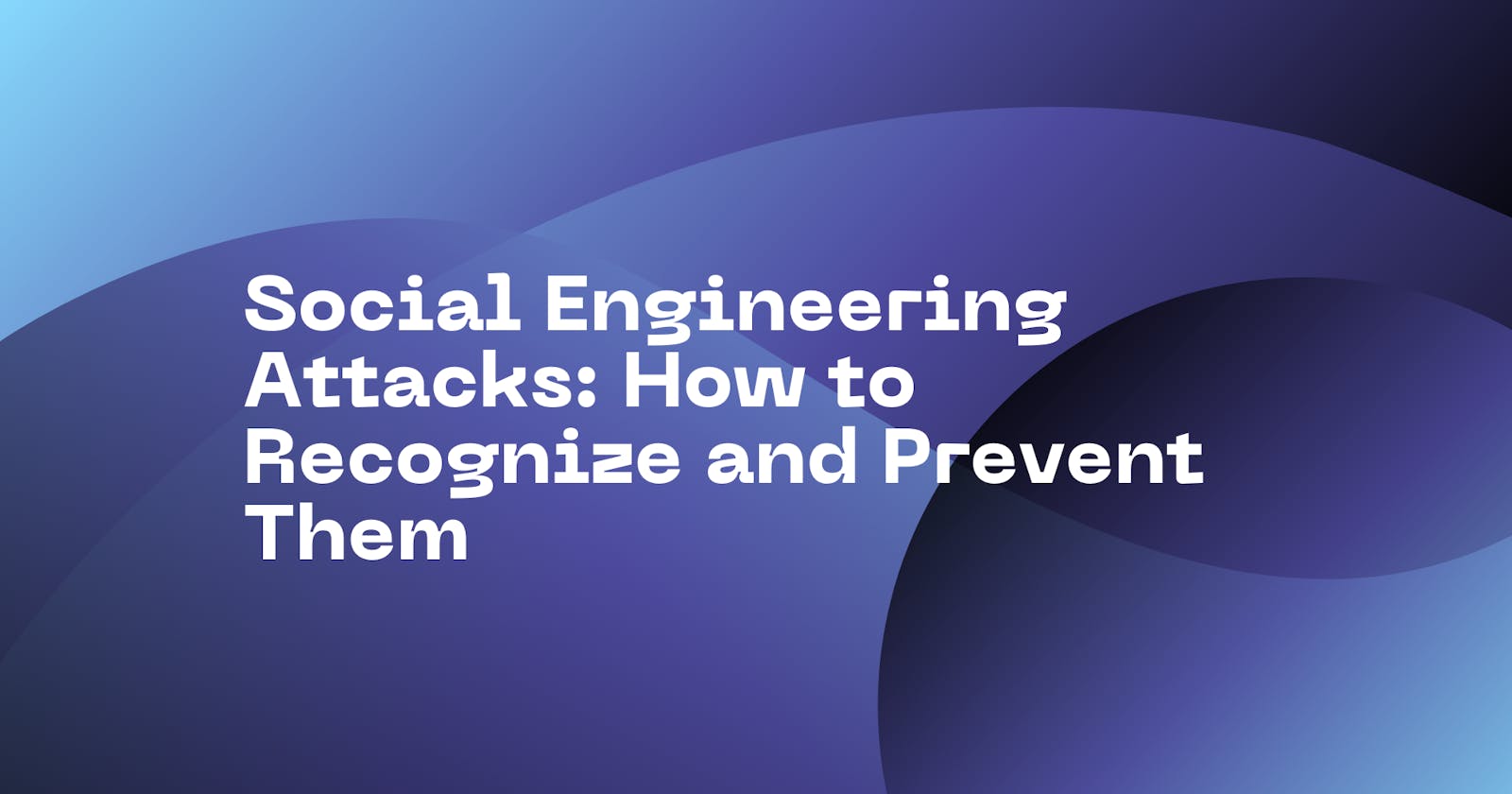Hello, dear readers! I'm Stella, and I'm thrilled to have the opportunity to share some vital insights with you today. In today's digital age, where information is at our fingertips, we often find ourselves vulnerable to various online threats. One such menace is social engineering attacks. In this blog post, we will delve into what social engineering attacks are, how to recognize them, and, most importantly, how to prevent falling victim to them.
Social Engineering Attacks: An Overview
As an IT professional working at a reputable cybersecurity company in Bangalore, I've seen firsthand the havoc that social engineering attacks can wreak. These attacks exploit human psychology rather than technical vulnerabilities, making them a persistent threat. Before we dive into prevention techniques, let's first understand what social engineering attacks entail.
Definition of Social Engineering Attacks
Social engineering attacks are cunning manipulations that cybercriminals employ to deceive individuals or organizations into divulging confidential information, performing harmful actions, or making financial transactions. These attacks prey on human emotions like fear, curiosity, trust, and urgency, rather than exploiting technical vulnerabilities.
Common Types of Social Engineering Attacks
Phishing Attacks: Phishing is one of the most prevalent social engineering attacks. Cybercriminals impersonate legitimate entities, often via email, to deceive recipients into revealing sensitive information, such as passwords or credit card details. Always be cautious of unsolicited emails requesting personal information.
Pretexting: In pretexting attacks, the attacker creates a fabricated scenario to extract information from the victim. This could involve posing as a trusted individual or organization, such as a bank or coworker, to gain access to sensitive data.
Baiting: Baiting attacks lure victims into downloading malware by offering enticing digital content, like free movies or software. Once the victim downloads the bait, their device becomes compromised.
Tailgating: Also known as "piggybacking," tailgating involves an attacker physically following an authorized person into a restricted area, taking advantage of their trust. It's a real-world example of social engineering.
Recognizing Social Engineering Attacks
Recognizing social engineering attacks is the first line of defense against them. Here are some telltale signs to watch out for:
Urgency and Pressure: Attackers often create a sense of urgency or pressure, making you act without thinking. Be cautious if someone insists on immediate action or threatens dire consequences.
Too Good to Be True Offers: If an offer or opportunity seems too good to be true, it probably is. Always verify the legitimacy of offers before taking action.
Unsolicited Communication: Be wary of unsolicited emails, phone calls, or messages asking for sensitive information. Verify the source's identity before sharing any personal data.
Requests for Sensitive Information: Legitimate organizations will not request sensitive information like passwords or credit card details via email or phone.
Unusual URLs: Check the URL of websites carefully, especially when clicking on links in emails. Phishing websites often have slightly altered domain names.
Preventing Social Engineering Attacks
Now that we've discussed how to recognize social engineering attacks, let's explore some practical steps to prevent falling victim to them.
Education and Awareness: Knowledge is power. Regularly educate yourself and your team about the latest social engineering tactics. Conduct awareness training sessions to keep everyone informed and vigilant.
Verify Identities: Always verify the identity of the person or organization making requests for sensitive information or actions. Use established contact information, not the details provided in the suspicious message.
Use Strong Authentication: Implement strong authentication methods, such as two-factor authentication (2FA), wherever possible. This adds an extra layer of security to your accounts.
Regularly Update Software: Keep your operating system, antivirus software, and applications up-to-date. Cybersecurity companies like CAMSDATA offer comprehensive solutions to protect against evolving threats.
Beware of Social Media: Cybercriminals often gather personal information from social media profiles. Be mindful of what you share online and adjust privacy settings accordingly.
Secure Physical Access: In the case of tailgating attacks, secure physical access to your workplace with key cards, access codes, or biometric locks.
Report Suspicious Activity: Encourage a culture of reporting within your organization. If someone suspects a social engineering attempt, they should report it immediately.
The CAMSDATA Advantage
At CAMSDATA, our mission is to safeguard your digital world against evolving cyber threats. With cutting-edge cybersecurity solutions tailored to your needs, we provide a robust defense against social engineering attacks and other online risks. Our team of experts works tirelessly to stay ahead of cybercriminals, ensuring your data and assets remain secure.
Conclusion
In a world where technology evolves at a rapid pace, social engineering attacks continue to pose a significant threat. Recognizing these attacks and implementing preventive measures is crucial for safeguarding your personal and professional information. By staying informed, vigilant, and partnering with trusted cybersecurity companies like CAMSDATA, you can fortify your defenses and enjoy a safer digital experience.
